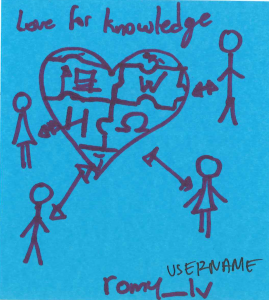
In the fast-paced world of business, meetings are essential for collaboration, decision-making, and sharing ideas. However, they can also be a significant drain on productivity. From scheduling hassles to the time-consuming task of taking and distributing meeting notes, there’s room for improvement. This is where the AI Meeting Assistant comes into play. In this blog, we’ll explore how AI-powered meeting assistants are revolutionizing the way we conduct and manage meetings.
The Meeting Conundrum
We’ve all been there: a packed schedule with back-to-back meetings, each requiring preparation, participation, and follow-up. It’s easy to feel overwhelmed, and the administrative tasks associated with meetings only add to the stress. Here are some common challenges:
- Scheduling: Coordinating schedules and finding suitable meeting times across multiple participants can be a logistical nightmare.
- Note-Taking: Assigning someone to take notes during meetings or doing it yourself is time-consuming and distracts from active participation.
- Action Items: Tracking action items and ensuring follow-through can be challenging, leading to missed deadlines and inefficiencies.
- Engagement: Ensuring that meetings are engaging and productive for all participants is an ongoing challenge.
The AI Meeting Assistant Solution
AI Meeting Assistants are intelligent software applications that leverage artificial intelligence and natural language processing to enhance every aspect of meetings. Here’s how they’re transforming the meeting experience:
- Effortless Scheduling: AI Meeting Assistants can analyze participants’ calendars and propose optimal meeting times, taking into account time zones and availability. This eliminates the back-and-forth emails and saves time.
- Real-time Transcription: During the meeting, AI assistants can transcribe spoken words into text in real-time. This feature is invaluable for creating accurate and searchable meeting records.
- Action Item Tracking: AI Meeting Assistants can identify action items and follow-up tasks mentioned during the meeting, ensuring that nothing gets overlooked.
- Meeting Summaries: After the meeting, AI assistants can generate concise summaries, highlighting key discussion points, decisions, and action items. This makes it easier for participants to review and act on the meeting’s outcomes.
- Enhanced Engagement: Some AI Meeting Assistants can analyze meeting dynamics, providing insights into participation levels and suggesting ways to improve engagement.
Popular AI Meeting Assistants
Several AI Meeting Assistants have gained popularity for their ability to streamline meetings and enhance productivity. Some notable examples include:
- Google Assistant: Google’s AI-powered assistant offers features like automatic scheduling and real-time transcription for Google Workspace users.
- Microsoft Cortana: Part of the Microsoft 365 suite, Cortana assists with scheduling, meeting notes, and action item tracking.
- Otter.ai: Otter.ai provides real-time transcription and meeting summaries, making it easy to capture and share meeting content.
- Zoom’s Meeting Assistant: Zoom’s integrated AI Meeting Assistant offers real-time transcription and can automatically generate meeting summaries.
Benefits of AI Meeting Assistants
The advantages of incorporating AI Meeting Assistants into your workflow are clear:
- Time Savings: They streamline scheduling, note-taking, and follow-up tasks, freeing up valuable time for more critical activities.
- Improved Accuracy: AI ensures accurate transcriptions and comprehensive meeting records, reducing misunderstandings.
- Enhanced Collaboration: Summaries and action item tracking foster collaboration and accountability among team members.
- Engagement Optimization: AI insights can help make meetings more engaging and productive.




